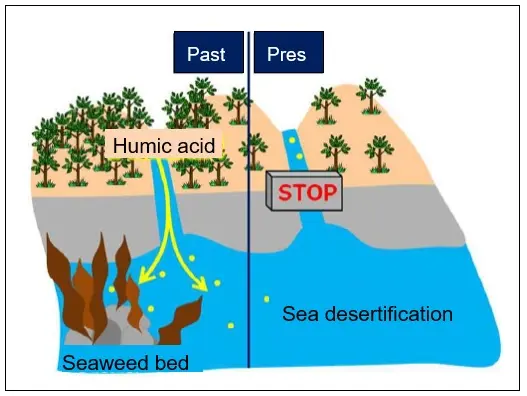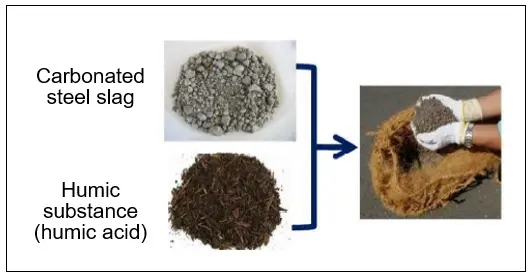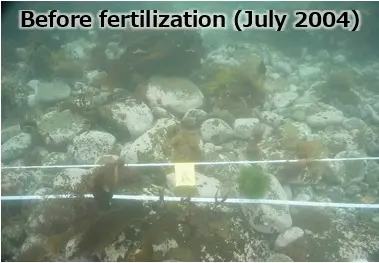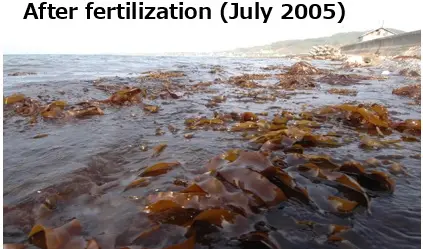Nippon Steel Received the Commendation for Science and Technology by the Minister of Education, Culture, Sports, Science and Technology Development of technology to create sea forests by using steel slag, which will support diverse ecosystems
Nippon Steel Corporation
Nippon Steel Corporation (hereinafter referred to as “Nippon Steel”) received the 2025 Commendation for Science and Technology by the Minister of Education, Culture, Sports, Science and Technology (Development Category), which praises persons or companies for significant achievements in the field of development and public awareness of science and technology, for its “development of technology to create sea forests for biodiversity conservation using steel slag, which supports diverse ecosystems”.
<Award-winning work>
- 1Award name: 2025 Commendation for Science and Technology by the Minister of Education, Culture, Sports, Science and Technology (Development Category)
- 2Award title: Development of technology to create sea forests biodiversity conservation using steel slag, which supports diverse ecosystems
- 3Award winners
Chika Kosugi, Manager, Materials Reliability Research Lab., Steel Research Laboratories, R & D Laboratories, Nippon Steel Corporation
Yuzo Akashi, General Manager, Slag, Cement & Resource Recycling Div., Nippon Steel Corporation
Tomoaki Tazaki, Chief Manager, Resource Recycling Div., Nagoya Works, Nippon Steel Corporation
Haruhiko Shinozaki, Senior Manager, Civil Engineering Div., Plant Engineering and Facility Management Center, Nippon Steel Corporation - 4Outline
- 1Background of Development
Seaweed beds are important habitats that support diverse ecosystems. However, since the Meiji era seaweed beds have been decreasing due to rocky-shore denudation (sea desertification), which continues throughout Japan today. The causes of sea desertification are considered to include an increase in seaweed-eating animals, a decrease in nutrient salts, and a lack of iron.
- 2Problems of Conventional Technology
It is considered that iron in the soil combines with humic acid and other substances and is supplied to coastal areas through rivers. Experiments have shown that iron is essential for the growth and maturation of kelps in their life cycle (Fig. 1). Conventional measures for rocky-shore denudation (sea desertification) have included the extermination of fish and other predators, the transplantation of seaweed, and those that focus on the interrelationship between forests, rivers, and the sea. Many of those measures, however, are based on experience, and their effectiveness on the vast coastal environment has been limited.
- 3Details of Development
Nippon Steel has recently developed an iron-based fertilizer to be used for supplying iron immediately oxidized in seawater in a form that can be iabsorbed by seaweed (Fig. 2). This fertilizer can stably supply iron by maintaining a low oxygen concentration inside to prevent the oxidation of iron from the iron source and by arranging humic substances close. In addition, Nippon Steel has developed a large-scale water tank system that can collect continuous data on water quality, which has been difficult in coastal areas, as a means of verifying the effectiveness of the technology for creating seaweed beds using iron-based fertilizers. This system has made it possible to create seaweed beds with a high degree of reliability and in a wide range of areas.
- 4Achievements of Development
In 2004, Nippon Steel began constructing seaweed beds using iron-based fertilizer in Mashike Town, Hokkaido. In 2014, the company built 45 tons in Betsukari in the same town and has demonstrated the regeneration of 3.6 hectares and a 1.8-fold increase in sea urchin catches by 2022 (Fig. 3). With reference to this case study, similar projects have been implemented in 56 locations nationwide as of 2023. In the seaweed beds that have been created, the amounts of CO2 and blue carbon stored in seaweed and other organisms are evaluated, and a total of 82.8 t-CO2 of J-Blue Credits certified by the Japan Blue Economy Association have been acquired in fiscal 2022 and 2023.
- 1Background of Development
Fig. 1. Supply of nutrients including iron from the land (past) and the resulting rocky-shore denudation (sea desertification) (present)

Fig. 2. Iron-based fertilizer

Fig. 3. The state of rocky-shore denudation (sea desertification) before construction (left, underwater) and the state of a seaweed bed after construction (right)

